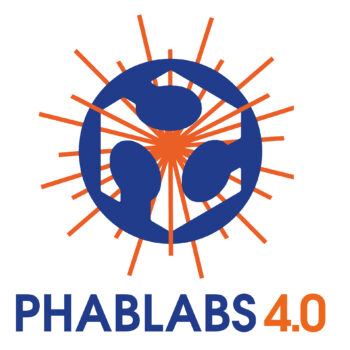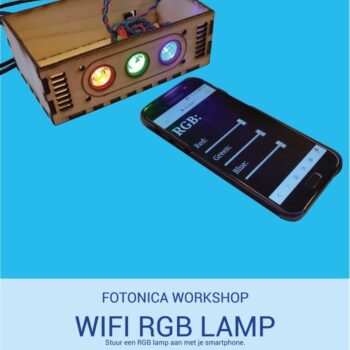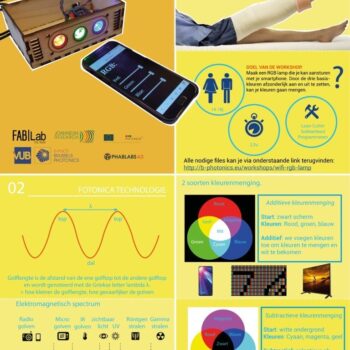WIFI RGB Lamp
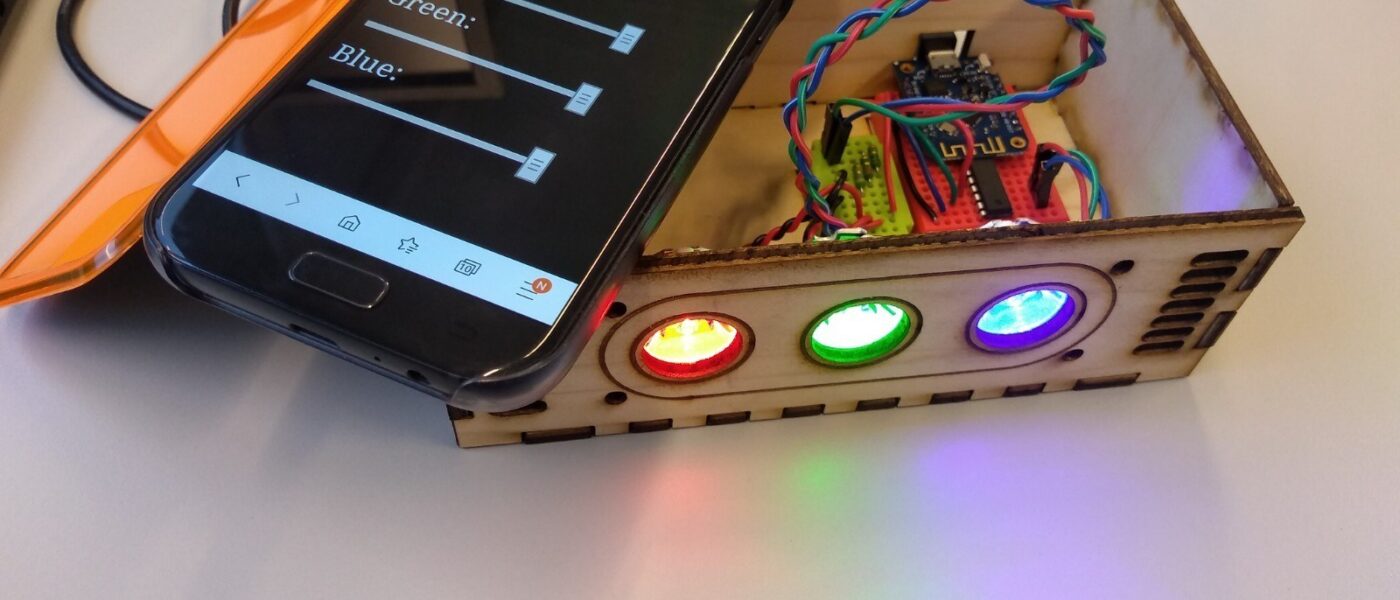
WIFI RGB Lamp
Lucie has a broken leg and is in the sofa. It is getting darker outside and she wants to light a lamp. Standing up and walking are difficult. Can you help make a lamp that she can switch on and off with her smartphone?
In this workshop, an RGB lamp is built that you can control with your smartphone. Change the intensity of the three basic colors to create mixed colors.
This example of additive color mixing is also used in an LCD (Liquid Cristal Display) screen.
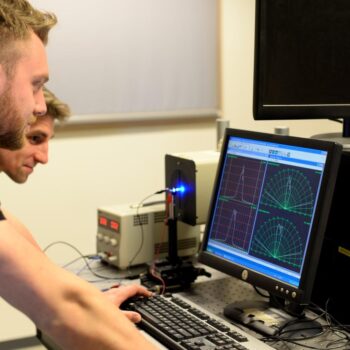
15-18 year

2,5 h
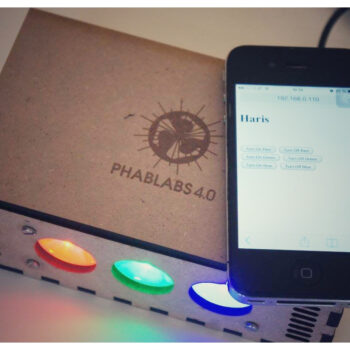
color mixing, RGB

lasercutting, soldering
Photos

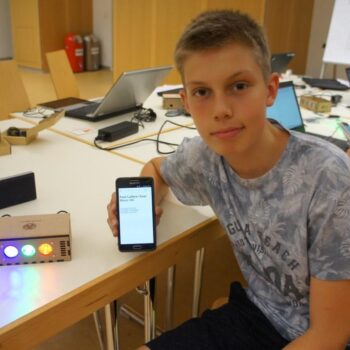

Instructions and files
Looking for the right materials?
Stop looking, you will find them here!

- Internet of Things (IoT)
- Linking devices to the internet.
- Additive color mixing.
- LCD screen: RGB mixing per pixel
WHAT DO THE PARTICIPANTS LEARN:
Facts:
-Describe and illustrate additive and subtractive color mixing.
-Explain the perceived color of light and objects using principles of subtractive and additive color mixing.
-Situating and describing a color within a color space.
-Determine from observations that light consists out of different colors.
-Describing the mixing of colored light and dyes, and deriving the laws from this.
-Describe the concepts of main colors, mixed colors, complementary colors for additive and subtractive color mixing.
-Describe the concept of color of an object by indicating which light colors are absorbed by the object and to what extent.
-Describe the concept of color on a website as a combination of the light colors red, green and blue.
-Applying the theory of color mixing in a number of practical situations such as: the effect of the color of incident light or the effect of using a filter.
-Explain the color phenomena of light in daily life.
Skills:
-Assembling
-Cooperation
-Programming
-Building their own setup and linking observations to theory.

